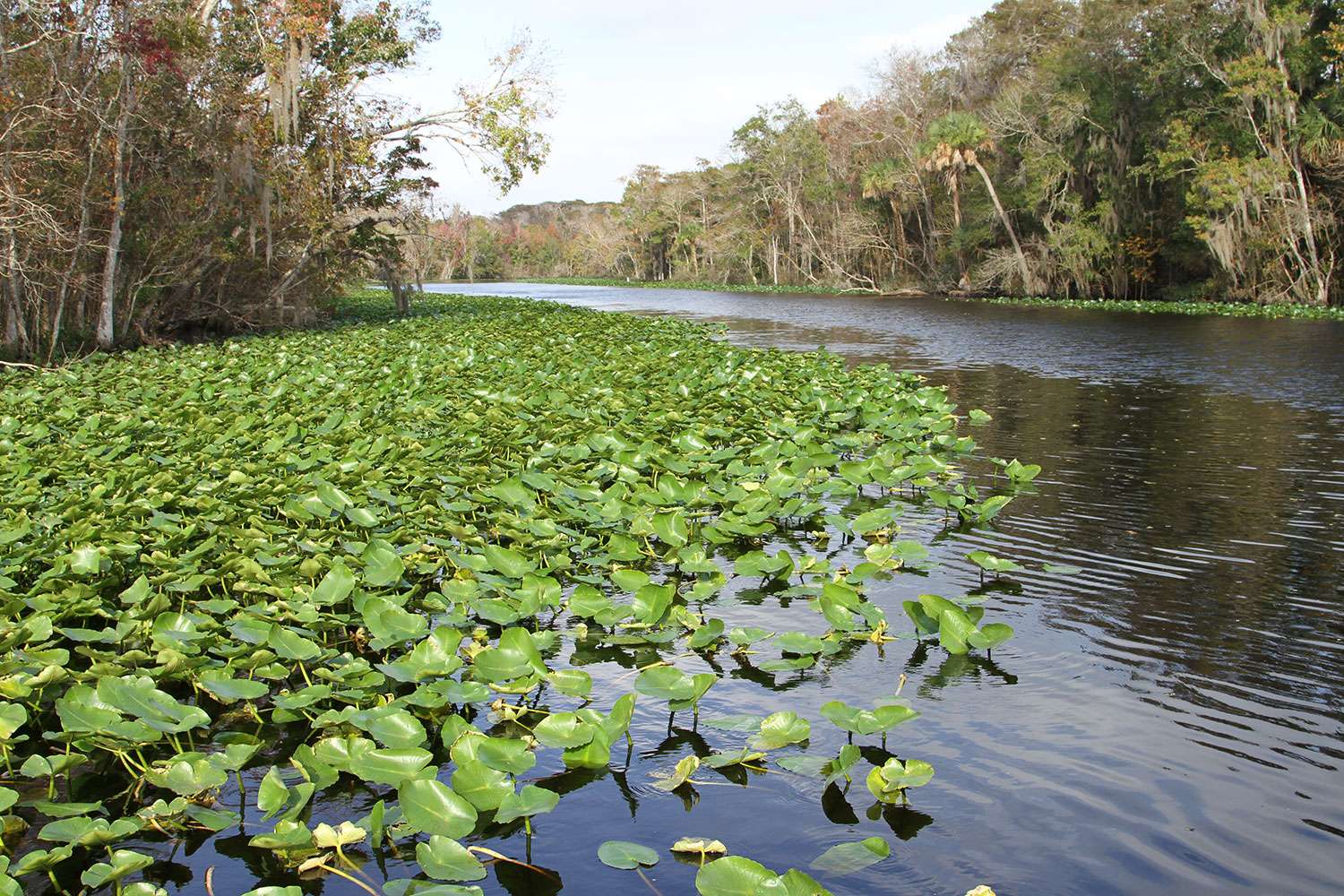
Efficiency, time-management; these are the constant considerations driving Kyle Monti’s decisions. Whether he’s guiding on Lake Okeechobee or competing on the Bassmaster Elite Series, the Florida pro knows he can often find what he’s looking for in and around pads. The key, Monti said, is recognizing what various types of pads offer and how to leverage their potential.
“Depending on what lake you’re on, there’s always some type of pads available,” he said. “But depending on what type of pads you have would determine what time of year you’d want to target them.”
Pads present a topic broader than we can cover in one sitting. But over the years, Monti has refined his pad perspective and he shares some of that wisdom here.
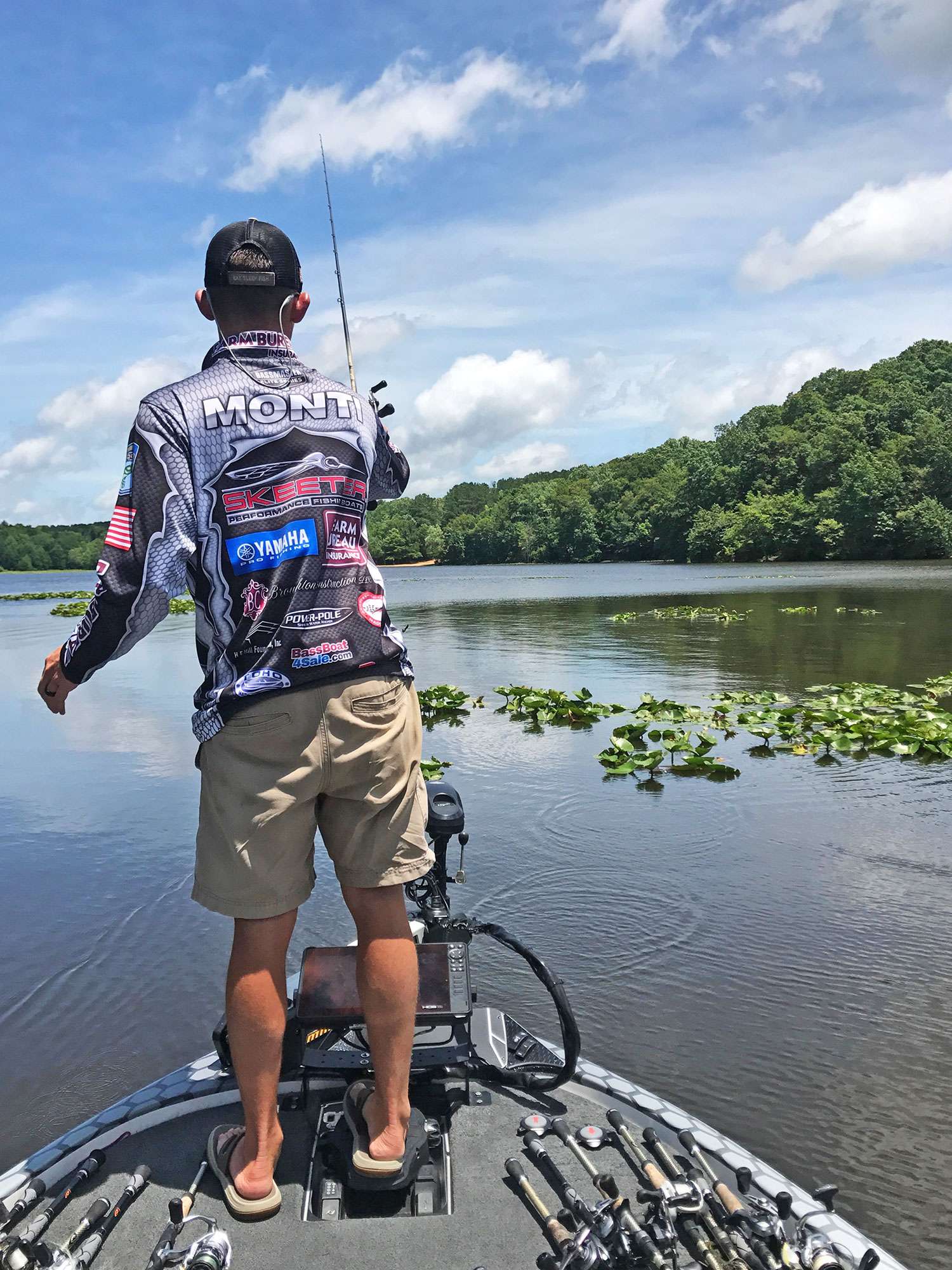
Spatterdock
Sometimes known as bonnets, these broad pads reaching above the surface top Monti’s preference, especially on Central Florida Lakes like Toho and Kissimmee. Typically growing in large fields with abundant cover, these pads hold perennial opportunity.
“The fish will use those throughout the year. They’ll prespawn in the really thick fields of it, they’ll spawn in the spatterdock and they’ll also stay around for the bluegill that come in after the bass spawn,” he said. “They’ll feed on those bluegill all summer long.”
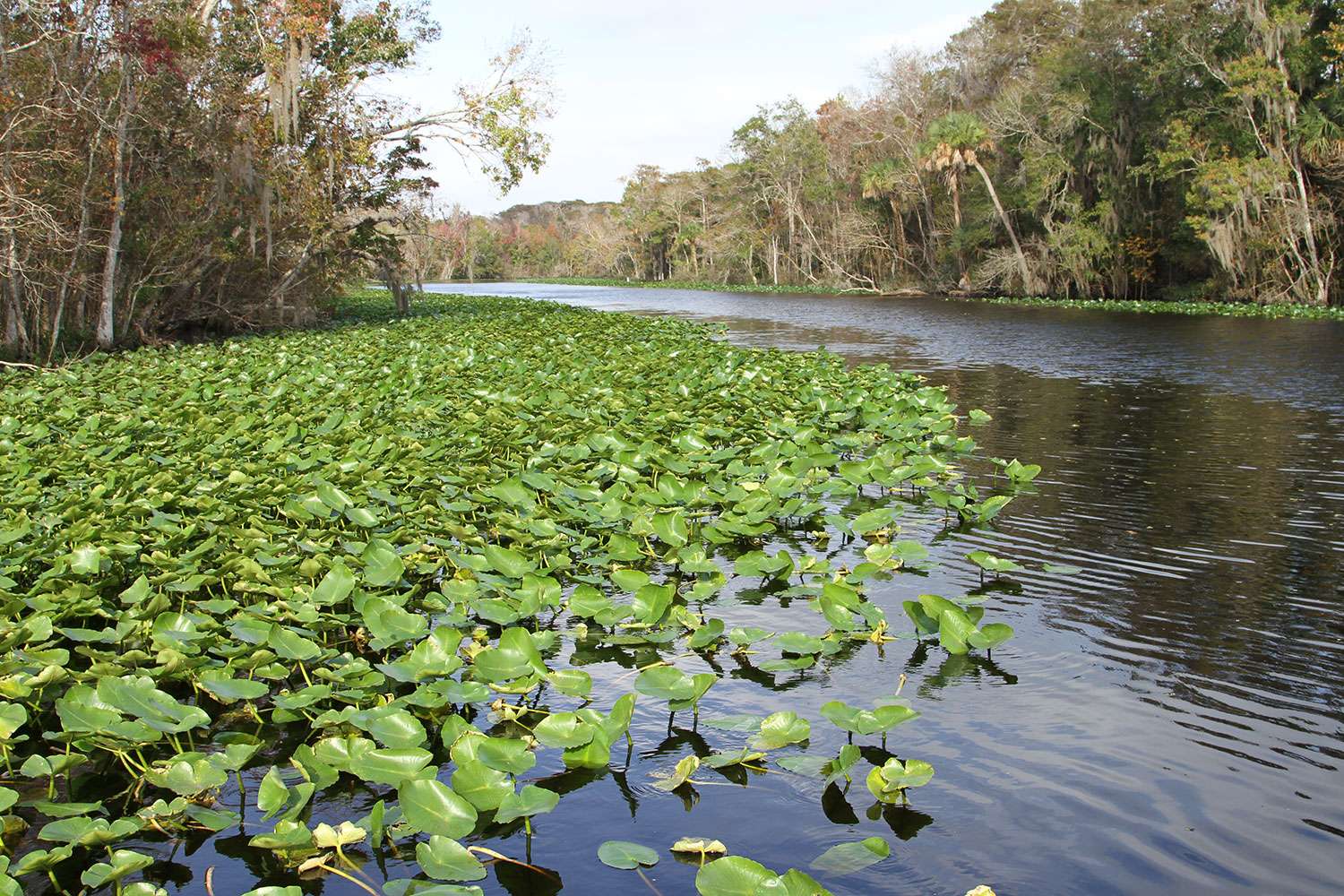
Notably, spatterdock fields typically grow in softer bottom, but the plant’s structure offers an alternative to firm bottom.
“They have big stems, the (diameter) of a dime or a nickel and that is a hard spot because the root ball on these plants is almost like a log,” Monti said. “The fish will use that as their hard spot to spawn on it; bluegill will spawn on this too.”
Best baits: Monti’s go-to for spawning fish in an unweighted Texas-rigged Bruiser Baits Big Stick. He finds the bait’s dense body and durable composition ideal for efficiently working in and out of the heavy cover.
“For spawners, it’s fishing really slow at the base of the bonnets,” Monti said. “You can also flip a jig — that’s a good way to get really big fish.”
Monti looks for prespawners by fishing a Smithwick Devil’s Horse or a Chatterbait with a Bruiser Baits Super Swimmer trailer around the spatterdock edges, while also sending in the stick bait and jig for a deeper look.
If he’s hunting postspawners, he wants to cover water to dial in where the exiting fish are staging. Here, a topwater frog, buzz toad or swim jig does the job.
Tactical tip: Monti said spawning season turns those spattedock fields into the proverbial needle-in-the-haystack, as the big females prefer isolated clumps, holes and points.
Dollar pads
The small, mostly round pads about the size of a silver dollar that lay flat on the surface are one of Monti’s favorite spawning habitats on Lake Okeechobee and the St. Johns River. He also finds good postspawn action over bream beds, but with dollar pads growing over firm, sandy bottom, it’s usually a slam dunk for bedding bass.
Best baits: “I’ve found that covering water over the surface of the dollar pads is probably the most effective method, because they typically grow very shallow,” Monti said. “I’ve seen the bonnets grow in 7-8 feet of water, whereas the dollar pads are typically in less than 3 feet, so the difference between the bottom and the top of the water column isn’t that much.
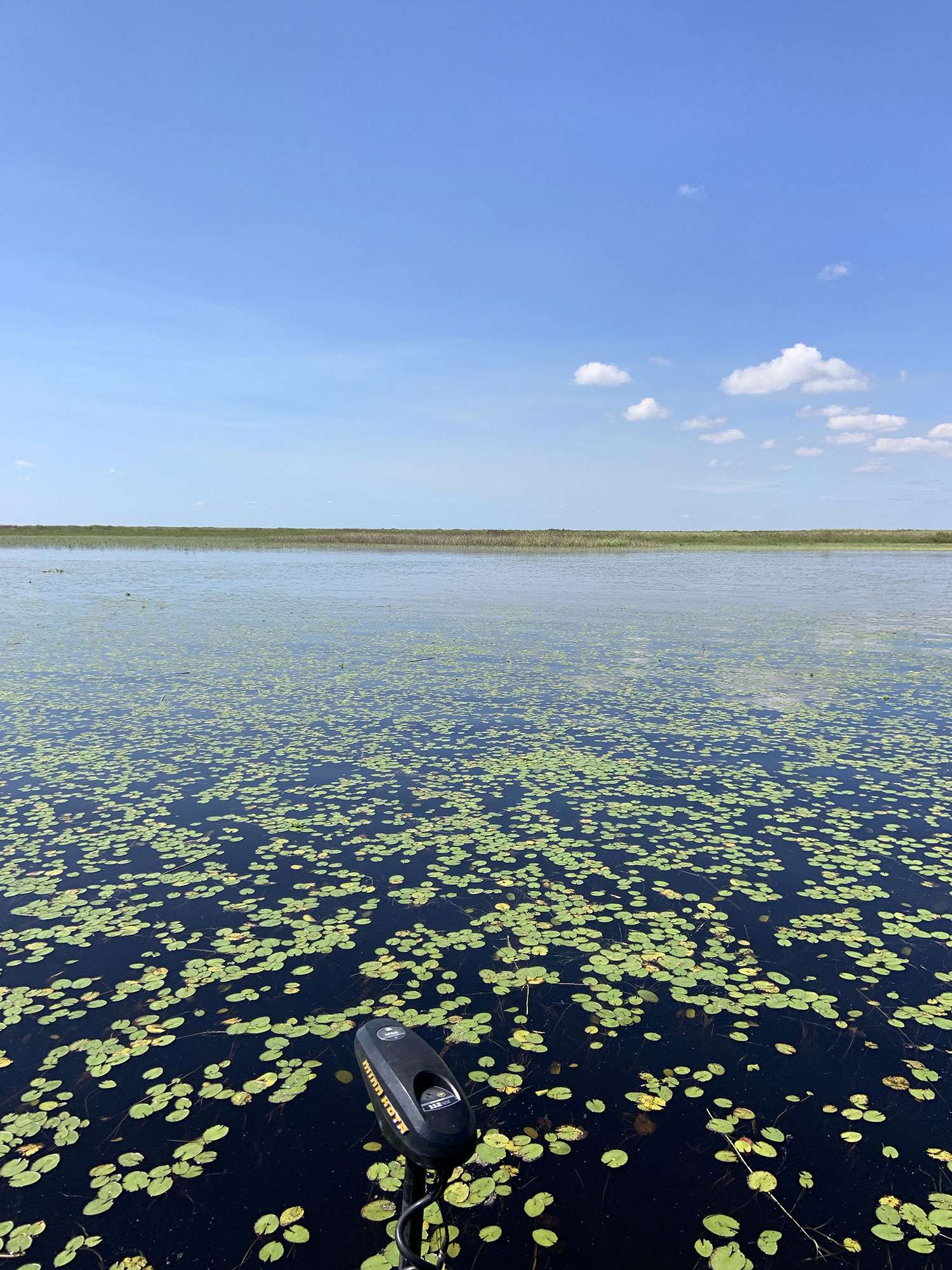
“A topwater is most effective for covering the dollar pads quickly, but it’s important that when you get a few bites in an area, you’re able to slow down and take an unweighted stick bait at the irregularities. You’re always looking for openings in the pads, denser areas — whatever you have the most of, look for something different. If it’s really thick pads, I’m going to look for a thin area; if it’s a really thin patch, I’m going to look for the thicker areas.”
Tactical tip: Monti said the edges of dollar pads are the best starting point for two reasons: First, feeding bass will set up on edges. Furthermore, remaining on the outside maintains a stealthy presence.
“We you get up inside of those pads, it’s hard to be quiet; it’s hard to move through those pads without making a lot of noise,” Monti said. “If you run your trolling motor through there, a lot of times, that fish can hear you and spook off before you’re in casting range.”
American lotus
These are the large, round pads that lay flat on the surface; often dressed with white or yellow blossoms. Monti said he finds these most commonly in river systems and backwaters. While he won’t categorically avoid lotus pads, he’s selective in the amount of attention he’ll give them.
“Most of the time, these pads indicate a softer bottom, versus a hard bottom,” Monti said. “With these, you’re looking for more of a feeding fish that will be on the points or in the pockets where there are baitfish or bream present. You’re less likely to find spawning activity because the bottom quality is not as good around those.
“Sometimes, this is all you have and some vegetation is better than none. The good thing is that these pads provide a lot of shade, so it’s a good pad pattern for summertime.”
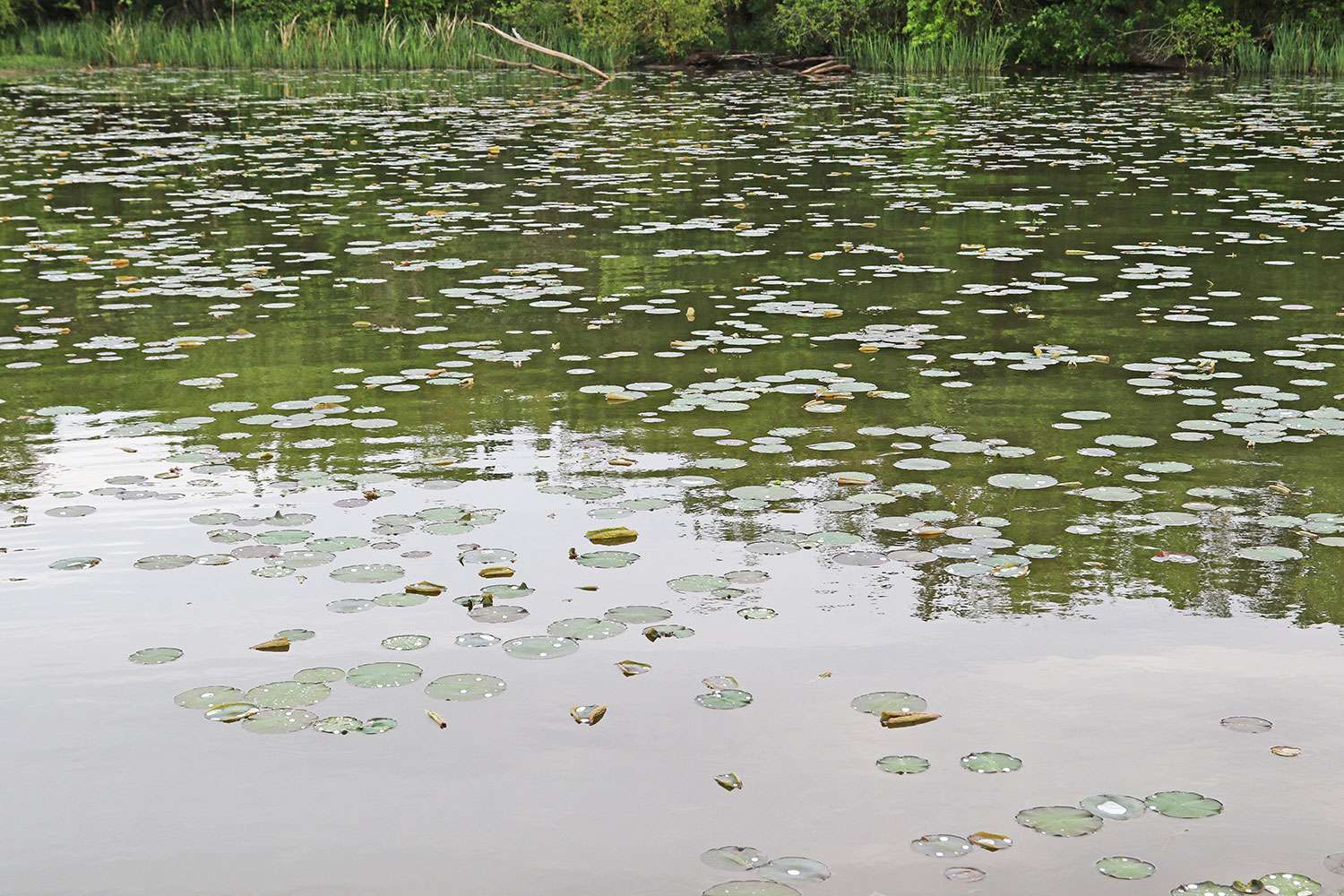
Best Baits: Monti’s call for fishing Lotus fields is a 1/4-ounce Crusher Lures swim jig. He selects this particular weight because it reaches below the pads without falling to the bottom and snagging roots.
“A frog can be a good choice also, but it doesn’t displace as much water through those pads because a lot of times, your frog is going to be on top of those pads where the fish can’t see it,” Monti said. “If a fish is not very aggressive, he’s not going to follow that frog.
“With a swim jig, you can land in an opening, get beneath the cover and work it all the way back to you, just under the surface.”
Tactical Tip: Describing his swim jig trailers, Monti said: “I usually use a Bruiser Baits Super Swimmer trailer, but if it’s sinking down to much, I’ll go to a Bruiser Baits Crazy Craw, which has a lot of flap and a lot of action that keeps the swim jig up higher in the water column with less effort.”





